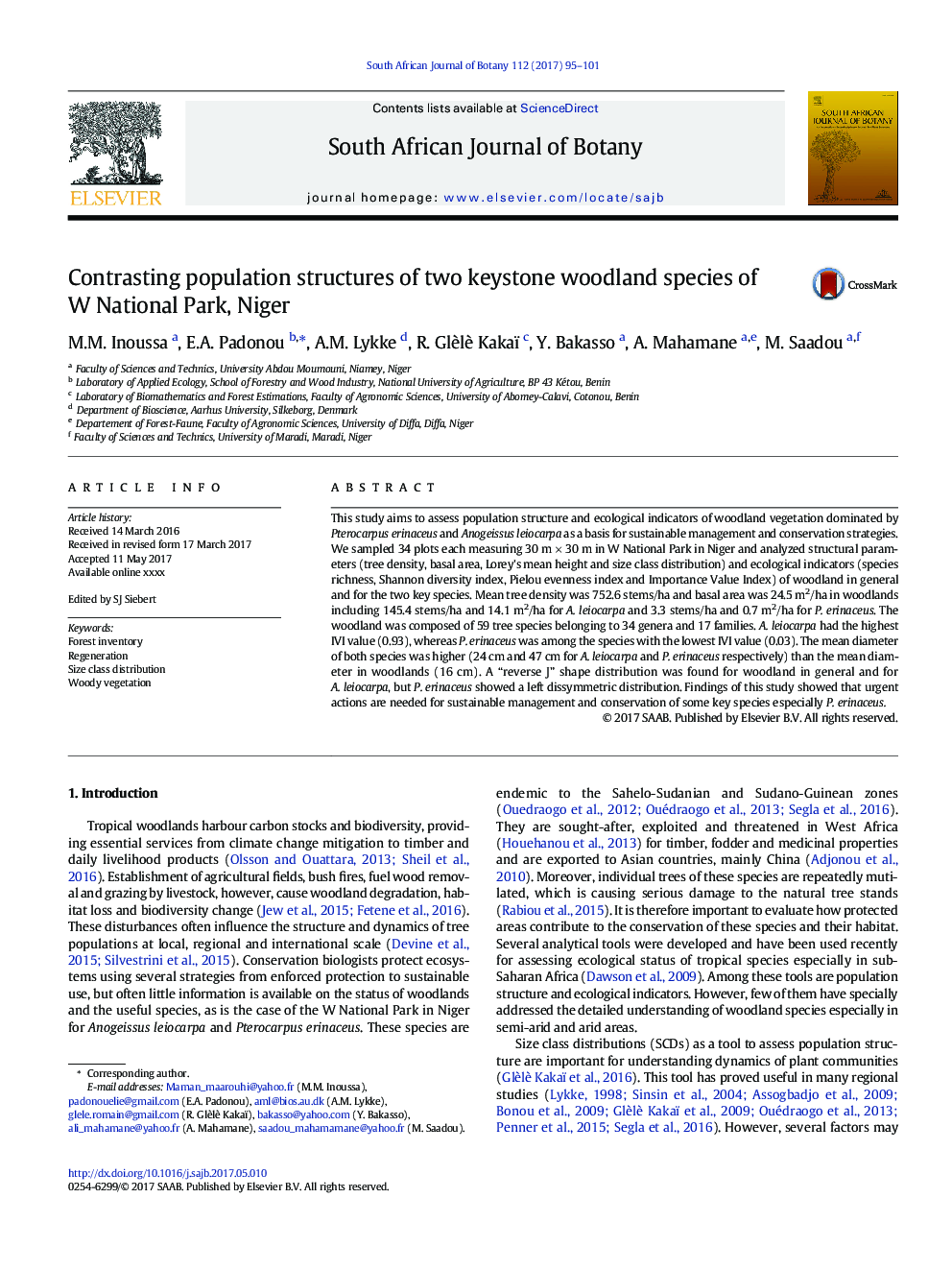| Article ID | Journal | Published Year | Pages | File Type |
|---|---|---|---|---|
| 5763167 | South African Journal of Botany | 2017 | 7 Pages |
Abstract
This study aims to assess population structure and ecological indicators of woodland vegetation dominated by Pterocarpus erinaceus and Anogeissus leiocarpa as a basis for sustainable management and conservation strategies. We sampled 34 plots each measuring 30 m Ã 30 m in W National Park in Niger and analyzed structural parameters (tree density, basal area, Lorey's mean height and size class distribution) and ecological indicators (species richness, Shannon diversity index, Pielou evenness index and Importance Value Index) of woodland in general and for the two key species. Mean tree density was 752.6 stems/ha and basal area was 24.5 m2/ha in woodlands including 145.4 stems/ha and 14.1 m2/ha for A. leiocarpa and 3.3 stems/ha and 0.7 m2/ha for P. erinaceus. The woodland was composed of 59 tree species belonging to 34 genera and 17 families. A. leiocarpa had the highest IVI value (0.93), whereas P. erinaceus was among the species with the lowest IVI value (0.03). The mean diameter of both species was higher (24 cm and 47 cm for A. leiocarpa and P. erinaceus respectively) than the mean diameter in woodlands (16 cm). A “reverse J” shape distribution was found for woodland in general and for A. leiocarpa, but P. erinaceus showed a left dissymmetric distribution. Findings of this study showed that urgent actions are needed for sustainable management and conservation of some key species especially P. erinaceus.
Related Topics
Life Sciences
Agricultural and Biological Sciences
Agronomy and Crop Science
Authors
M.M. Inoussa, E.A. Padonou, A.M. Lykke, R. Glèlè Kakaï, Y. Bakasso, A. Mahamane, M. Saadou,
